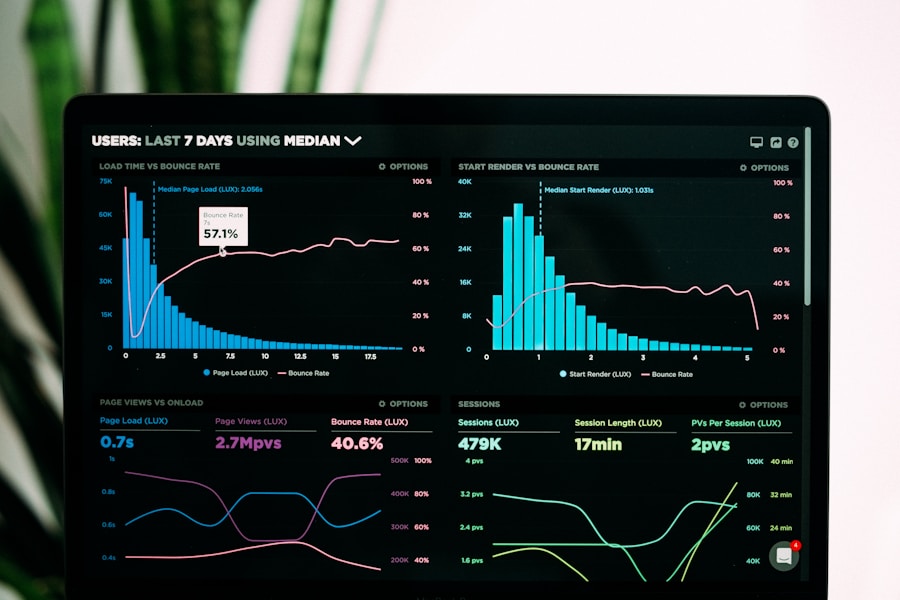Technical analysis is a method used by traders and investors to evaluate and predict future price movements of financial assets based on historical price data and trading volume. Technical analysis indicators are tools used to analyze market trends, identify potential entry and exit points, and make informed trading decisions. These indicators are mathematical calculations derived from price and volume data, and they help traders and investors to understand the market sentiment and make more informed decisions.
There are various types of technical analysis indicators, each serving a different purpose in analyzing market trends and predicting price movements. Some of the most commonly used indicators include moving averages, relative strength index (RSI), Bollinger Bands, Fibonacci retracement, and MACD (Moving Average Convergence Divergence). These indicators can be used individually or in combination to develop a comprehensive trading strategy. Understanding how these indicators work and how to interpret their signals is crucial for successful trading and investing.
Moving Averages: A Key Indicator for Crash Game Strategy
Moving averages are one of the most widely used technical analysis indicators in the financial markets. They are used to smooth out price data and identify trends over a specific period of time. Moving averages are calculated by taking the average price of an asset over a certain number of periods, such as days, weeks, or months. There are different types of moving averages, including simple moving averages (SMA) and exponential moving averages (EMA), each with its own strengths and weaknesses.
In the context of the Crash Game strategy, moving averages can be used to identify potential entry and exit points based on trend reversals and momentum. For example, a crossover of short-term moving averages above long-term moving averages may signal a bullish trend, while a crossover below may indicate a bearish trend. Traders can use moving averages to confirm trend direction and filter out noise in the market, making it an essential tool for developing a successful Crash Game strategy.
Relative Strength Index (RSI): Identifying Overbought and Oversold Conditions
The Relative Strength Index (RSI) is a momentum oscillator that measures the speed and change of price movements. It is used to identify overbought and oversold conditions in the market, which can help traders anticipate potential trend reversals. The RSI is calculated based on the average gain and average loss over a specific period of time, typically 14 days. The RSI ranges from 0 to 100, with readings above 70 indicating overbought conditions and readings below 30 indicating oversold conditions.
In the context of the Crash Game strategy, the RSI can be used to identify potential entry and exit points based on overbought and oversold conditions. For example, when the RSI reaches above 70, it may signal that the asset is overbought and due for a pullback, while a reading below 30 may indicate that the asset is oversold and due for a bounce. Traders can use the RSI to confirm price movements and make more informed trading decisions in the Crash Game.
Bollinger Bands: Utilizing Volatility to Predict Price Movements
Bollinger Bands are a technical analysis tool that consists of a simple moving average (SMA) and two standard deviations above and below the SMThe bands expand and contract based on market volatility, providing a visual representation of price volatility and potential price movements. Bollinger Bands are used to identify overbought and oversold conditions, as well as potential support and resistance levels in the market.
In the context of the Crash Game strategy, Bollinger Bands can be used to predict potential price movements based on volatility. When the bands contract, it may indicate low volatility and a potential breakout in the near future, while expanding bands may signal high volatility and potential trend continuation. Traders can use Bollinger Bands to identify potential entry and exit points based on volatility and make more informed trading decisions in the Crash Game.
Fibonacci Retracement: Identifying Potential Support and Resistance Levels
Fibonacci retracement is a technical analysis tool based on the Fibonacci sequence, which is a series of numbers where each number is the sum of the two preceding ones. In trading, Fibonacci retracement levels are used to identify potential support and resistance levels based on the key Fibonacci ratios, including 23.6%, 38.2%, 50%, 61.8%, and 100%. These levels are used to predict potential price reversals or continuations based on historical price movements.
In the context of the Crash Game strategy, Fibonacci retracement can be used to identify potential support and resistance levels for making more informed trading decisions. For example, if an asset retraces to the 61.8% Fibonacci level and bounces off, it may indicate a strong support level, while a break below this level may signal a potential trend reversal. Traders can use Fibonacci retracement to anticipate potential price movements and make more informed trading decisions in the Crash Game.
MACD (Moving Average Convergence Divergence): Confirming Trend Reversals and Momentum
The Moving Average Convergence Divergence (MACD) is a trend-following momentum indicator that shows the relationship between two moving averages of an asset’s price. The MACD consists of a fast line (MACD line), a slow line (signal line), and a histogram that represents the difference between the two lines. The MACD is used to confirm trend direction, identify potential trend reversals, and measure momentum in the market.
In the context of the Crash Game strategy, MACD can be used to confirm trend reversals and momentum based on the relationship between the MACD line and signal line. For example, when the MACD line crosses above the signal line, it may signal a bullish trend, while a crossover below may indicate a bearish trend. Traders can use MACD to confirm trend direction and measure momentum in the market, making it an essential tool for developing a successful Crash Game strategy.
Putting It All Together: Integrating Multiple Indicators for a Comprehensive Crash Game Strategy
Integrating multiple technical analysis indicators is crucial for developing a comprehensive Crash Game strategy that can help traders make more informed trading decisions. By combining moving averages, RSI, Bollinger Bands, Fibonacci retracement, MACD, and other indicators, traders can gain a more comprehensive understanding of market trends and potential price movements. This can help traders filter out noise in the market, confirm trend direction, identify potential entry and exit points, and make more informed trading decisions.
For example, traders can use moving averages to identify trend direction, RSI to confirm overbought or oversold conditions, Bollinger Bands to predict potential price movements based on volatility, Fibonacci retracement to identify support and resistance levels, and MACD to confirm trend reversals and momentum. By integrating these indicators into their trading strategy, traders can develop a more comprehensive approach to analyzing market trends and making more informed trading decisions in the Crash Game.
In conclusion, technical analysis indicators are essential tools for analyzing market trends, identifying potential entry and exit points, and making more informed trading decisions in the Crash Game. By understanding how these indicators work and integrating them into a comprehensive trading strategy, traders can gain a more comprehensive understanding of market trends and potential price movements. This can help traders filter out noise in the market, confirm trend direction, identify potential entry and exit points, and make more informed trading decisions for successful trading in the Crash Game.

